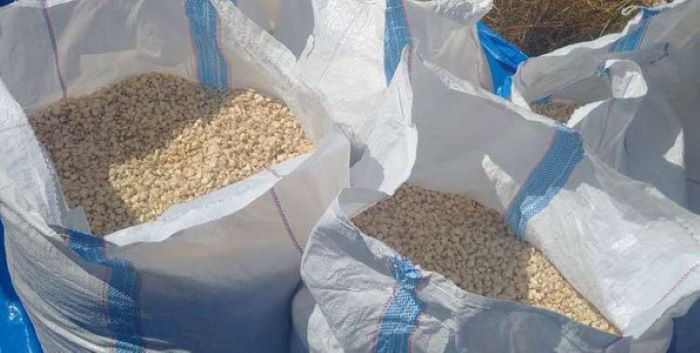
LACK of capacity to convert harvests into commodities and products that last longer has negatively impacted African food systems for more than five decades. Huge harvests are meaningless if much of the food is not consumed or turned into better livelihoods and employment creation.
If there was serious investment in food preservation, the whole African continent would not be spending US$100 billion importing food annually and post-harvest losses would not be more than the current US$4 billion.
While rainfall is often associated with good harvests, what is becoming clear is that in a changing climate, too much rainfall can have the same negative effect as too little rainfall.
For instance, there are some African communities where once too much rainfall is received, farmers have to forget about growing maize and other crops.
The power of data and participatory value chain mapping
Involving communities in mapping their food systems can be a fundamental starting point in converting harvests into lasting products.
Such a process can also enable communities to tell stories about their local food baskets in ways that reveal opportunities for value addition and preservation.
Through that process, communities can increase their interest in understanding their contribution to the national food basket including surplus going to diverse markets. That level of understanding which informs the whole community’s investment guide cannot be done at individual farmer level.
- Letter from America: The death of the Zimbabwe dollar shows the King has no clothes
- Deputy minister in GMB theft scandal
- ZITF: The hits, misses of 62nd edition
- ZITF: The hits, misses of 62nd edition
Keep Reading
Data collection and dialogue sessions with communities through participatory value chain mapping can rebuild hope among farming communities back to the time when farmers where able to send their children to school through growing groundnuts, small grains and other commodities.
The communities will also begin to appreciate the value of building enabling market structures and systems. They become conscious of the value of tracking the movement of food from rural areas to urban populations as well as different kinds of losses along the way.
That is also how losses that happen at African mass markets can be discussed and captured as part of managing losses including the role of mass markets in supporting rural livelihoods and rural industrialisation.
In addition to distributing the whole food basket, these markets also support cross-border traders whose contribution to African economies remains unrecognised due to absence of data.
How do African countries measure economic performance without data?
The absence of data on the sources of more than 75% of local food systems renders conventional ways of measuring economic performance unreliable in most African countries. For example, what is the impact of tomato gluts or shortages to communities that heavily depend on tomatoes as sources of income?
For communities that depend on small grains as economic drivers, what is the impact of government imposing prices on grains? What is the implication of some farmers refusing to sell their produce to national buyers like the Grain Marketing Board in preference for mass markets?
Unlike mass markets that try to come up with fair pricing systems based on demand and supply, prices announced by government are often not informed by demand and supply.
When pricing policies are not farmer-friendly, farmers would rather spend time and money going to distant urban mass markets, avoiding a government-controlled grain depot that is located a few kilometres from their home area.
Although blessed with broad food baskets comprising more than 40 diverse commodities, many African countries do not have much data on the majority of food systems and supply chains.
Without data, it is difficult to come up with informed policy interventions.
They end up relying on periodic vulnerability assessments that are often too narrow and skewed towards food aid, not long-term interventions.
By now, all African countries could have invested in analysing the value of small grains regions, fruit regions, livestock regions and other regions dominated by specific agricultural economic drivers.
Without fluid data collection systems along supply chains, it is difficult for policymakers to understand the extent to which agriculture contributes to economic development.
Such understanding can change the role of extension services towards building fluid agricultural data collection systems located at ward level from where production statistics are processed and shared with different agricultural users including diverse markets.
On the receiving end, there should be a market data centre where commodity supplies are captured in terms of sources, volumes, value (prices) and losses.
As the market receives tomatoes from diverse communities, the value can easily be analysed to show if the source communities are getting the best value from tomato production.
Data as a key investment guide
Data collection, processing, analysis and interpretation is a key investment guide for government, private sector and development organisations as well as for monitoring the utilisation of natural resources at national level.
Policymakers can be able to make sense of how the country is getting the best returns from natural resources like forests, water and soils including the cost of replacing all potential horticultural crops in a dry region irrigation scheme by growing wheat.
How much does the economy lose in terms of nutrition, water and alternative potential prices that could be fetched by horticultural products that are sold through mass market auction compared to wheat sold through controlled prices?
As a country grows wheat that has a direct controlled market, how many actors are excluded who could have participated in supply chains through horticulture, for instance?
Opportunities for aligning financial models with mass markets and seasons
The contribution of mass markets and their actors to rural and urban development is often overlooked yet these markets can assist in managing food losses and converting harvests into long-lasting products.
It is unfortunate that African financial sectors have not invested in understanding the seasonality of mass markets as key in ensuring financial performance.
They continue to focus on the production season only yet farmers get their returns on investment from the markets.
Without investment in data, most financial institutions fail to come up with business models that align with the marketing season.
Yet with the right data, financial institutions can build market-informed seasonal financial systems that are guided by the demand trends induced by a number of actors.
For instance, towards the festive season, demand for certain fresh commodities increase and that is when financial institutions can inject finance to trigger demand for specific value chains.
Building synergies can go a long way in addressing some of the challenges.
For instance, instead of working in isolation, in an agriculture-driven economy, some government ministries should be departments in the Agriculture ministry to give the economy a complete agricultural face.
For instance, ministries responsible for ICTs, Women Affairs, Youth and SMEs should be part of the Agriculture ministry because they all have a component of agriculture and food systems.
Likewise, food safety and nutrition issues should be in the Agriculture ministry because of their cross-cutting nature. All these arrangements can assist in reducing food loss and waste in many African countries.
- Charles Dhewa is a proactive knowledge broker and management specialist










